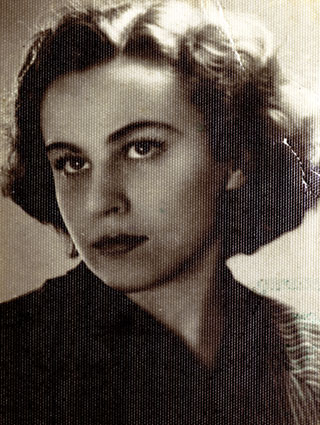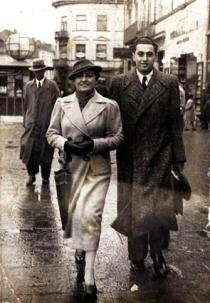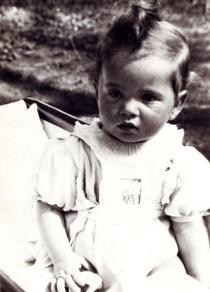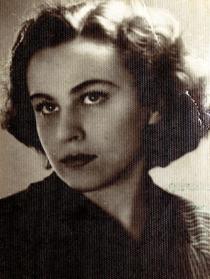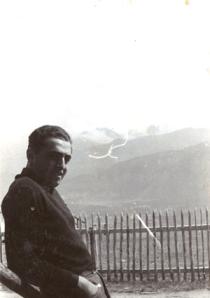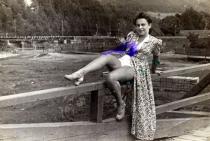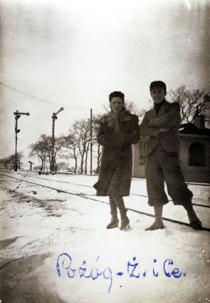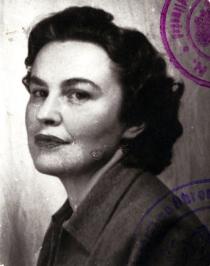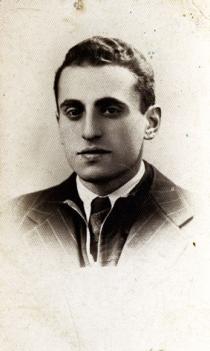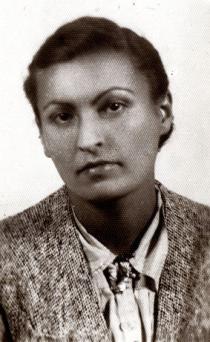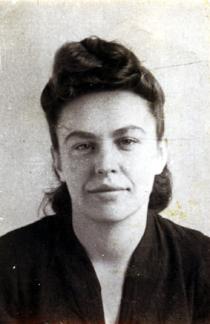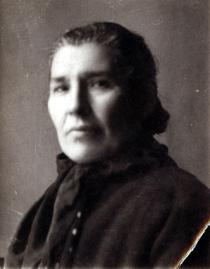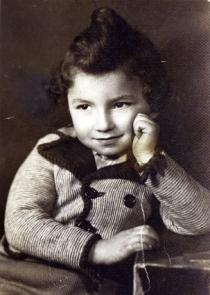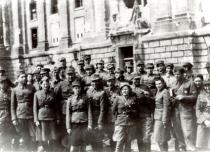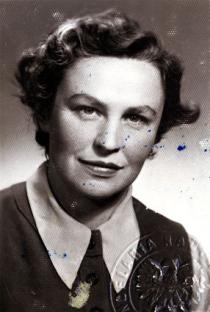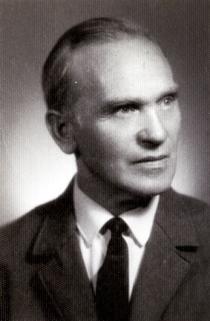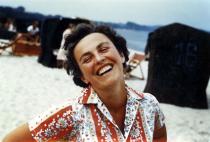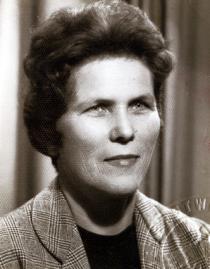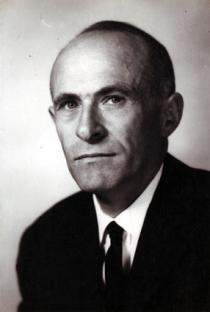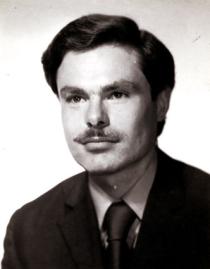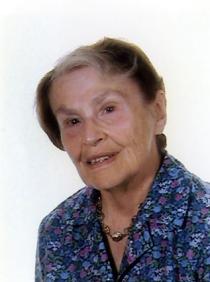This is me. The picture was taken in 1935 at a photographic studio in Warsaw. It was before my matriculation exam, which I took at the Goldman-Landauowa private school for girls.
I went to that school when I was 6. Warsaw, Przejazd Street was the address. The school had a very nice building; there were eight grades with a pre-kindergarten and kindergarten; we went from Monday till Friday, Saturdays and Sundays were free-the only school which worked like that. We went for six hours, from 8am to 2pm. Our headmistress was baptized for sure, her sister Julia, the secretary, looked like a hundred shiksas. The headmistress's husband was a gym teacher in the lower grades. I remember they had her portrait made and hang it on the wall in the main gym hall. She was a crazy woman. Once she caught my friend with dyed hair and stuck her head in the sink.
For a short while, in kindergarten, I was a top student. Later I also had good grades, I did study. I had a breakdown in the 4th grade, because our teacher committed suicide out of love. She poisoned herself. Her name was Wanda Konowna, she was a teacher of Polish. She fell in love with a well-known chess-player, Frydman, I think. Her parents came for her body from Lodz in this special car and I remember we followed it [the hearse, which later went to Lodz]. We all had fits of crying, we couldn't deal with regular classes, it was awful. She was a lovely woman. Another teacher, Pola Borensztajn or Berensztajn, taught German. I had only occasional contact with her because I took French. She called me by my full name, very official. A petite woman, we called her the flee. She was funny; she seemed to be afraid of us. I did like some of the school subjects. I liked math, but only algebra, geometry was beyond me. The math teacher's name was Glas. We really made her miserable, we were so bad. Today, when I think about it, I don't know why do girls become like that. One of my friends, called Bander, pretended she went mad and wants to throw herself out the window. Poor Glas ran around the classroom begging us to stop her. Good God!
I also really liked Latin, because I was in love with the teacher. His name was Halpern and he was very handsome. He addressed us by our first names (not everybody did). I ran into him later, at the community office, already in the Ghetto, I think; anyway, the Germans were already here. He pretended he didn't know me. I did too. So. He was married to our [nature] teacher, a big blond called Bronislawa. He was a Jew and she was not. She died of typhus in the Ghetto. I don’t think he survived either. I also liked ancient history, I really did. It was taught by the Director, the history teacher's husband. First he was our history teacher, then her. His name was Dinces. Later I didn't like history so much. Somehow it didn't stick in my mind, I couldn't remember the dates. We had no Yiddish at school but we did have history of the Jews, up to the 4th grade. Our teacher's name was Inwentarz. I read very well, articulating everything clearly, so I was always called upon to read everything. He gave me these thick volumes to read; it was something religious, but I don't know what. I read in Polish, but I didn't understand a word of it. Poor Mr. Inwentarz, we didn't take his class very seriously and we made fun of him. He once wrote: 'The whole class wanders around the class and nobody takes any notice when I call them to attention.' Oh, there are things one never forgets… It was a Jewish school. Even though the Headmistress was probably baptized, only Jewish girls went to that school. A Polish girl came once, spent a few days and left. I guess she didn't like it. She was probably from a mixed marriage, otherwise she wouldn't have come to that school in the first place; that's what I think.
There were around twenty of us in my class. I used to remember all the names. At the front desk there sat a very good student, Gehen; she was good at math and physics, but she wouldn't help anyone cheat. Next to her, there was this girl from some provincial place, very miserable-looking. There was Rega Segal, the daughter of the director of the Jewish Theater. I used to go there a lot, to that theater-at Dzika? Gesia?-[probably the Jewish Theater at Dzika; in 1930-33 a theater hall there was used by Jewish theater companies] because she'd drag me there with her. I think at school she sat with this Russian girl, Zenia Weksler. At the next desk sat Polcia Klaps, who looked like a shikse. Then Zosia Kestenbaum and Celinka Finkelkraut, who lived closest to me, on Chlodna, at the corner of Zelazna. Then Runia Bander, who was friends with Halinka Zlotogora. I saw Halinka later in the Ghetto; she already had a child and a musician husband. Then Zosia Klajnbart, Franka Jarlicht, and next to her this girl who was emotionally unstable, as we later decided, who committed suicide, even before the war. I also remember this wild Bronka, who pretended to faint in class and we had to carry her out. Good grief! There was also Zula Wermus, she went to dancing school. Our headmistress said it was either dancing or school so she quit dancing. She wrote very beautiful compositions. Another one was Anka Bortner who, I think, never graduated.
I sat in the last row, with Lola Henigman. But I hung around with Halinka Zlotogora, Anka Bortner and Rozka Madrzak. Rozka was the youngest of three daughters of the owner of 'Plutos,' a large chocolate factory. Very wealthy people; they lived at 31 Krolewska [a smart street downtown, near the Saski Garden]. That was a huge, beautiful house, with 11 rooms or so. And I'll never forget one special room with a couch on which only pillows were arranged. I also remember the food was strange at their house; there was no bread for dinner, only chocolate. Rozka sometimes invited friends over but not everybody. All three daughters of the Madrzak family died during the war, only the son survived. After the war I had this very short meeting with my friends, including Franka Jarlicht, who didn't spend the occupation here but went to Israel [Palestine] with her husband. Anka Bortner also visited me. After the war I got a call from the headmistress's son, a car mechanic. He wanted to find those of us who had survived the war. But there was only one other one-Zosia Klajnbart. He wanted to put together a commemorative album. His mother, our headmistress, died before the war, I think.
I took my matriculation exam in 1935, I think. I remember I studied for it together with Celinka Finkelkraut and she failed. She had to take it again the following year and I felt very sorry for her. I didn't study history with Celinka, but with Bander, Runia Bander. First I had an exam in Polish. Then, even though I liked math and couldn't do physics, I had an exam in physics. Since Rega Segal was sitting right in front of me, I said to her: 'If you don't help me, I'll kill you!' and the poor thing did; I would have never been able to do it without her help. And Latin. I had a very good grade in Latin, because I liked the teacher, unlike the other subjects where I had threes and fours [B's and C's]. The Latin teacher must have been scared we wouldn't pass, so before the exam he dictated lists of words to us. And I got lucky. My mother's cousin was a Latin teacher (she graduated from the Latin Philology department at the University) and she came to us from Konskie [around 160 km south from Warsaw]. Basing on those lists of words she figured out what I would have to translate in the exam. Can you believe that?! And indeed, when I went to the exam, he gave me that text. So I passed it with flying colors.
After graduating I started attending sewing classes at ORT [the Society for the Propagation of Labor among Jews]. I was very good at drawing and I planned to become a fashion designer. My mother even wanted me to go to Vienna, to learn cutting, because Vienna was known for fashion design. But it all came to nothing. I didn't do well at ORT, because I didn't like sewing. I went to that school, but it didn't make sense really. I went for almost a year, but didn't even take the exam at the end.
At ORT, I met Blima Ramler from Kolomyia [now Ukraine]. I renamed her Lidka. She was a very good student of sewing, unlike me. She did all the machine-sewing for me. She graduated and went back to Kolomyia. Once she came to Warsaw with her fiance, Henryk, to see an exhibition. In Warsaw, they stopped at my and my parents' house and stayed for two days. Then she invited me to Kolomyia and I spent ten days there. I met Henryk's friend there, Emanuel, Menio. He enlarged my high school graduation picture and touched it up so that my headmistress at school said I wore makeup for it. Ridiculous! I had that portrait up on the wall above my bed.
During the war I lived with my family in our apartment at Leszno Street, in the Ghetto. We remained there until the deportations began. Two Germans entered the house and yelled: 'Alles raus!' [Ger.: everybody out!]. We were all scared, so we all went out. Only we took bedclothes with us, to have something to sleep on. We got an apartment at 16 or 18 Mila. I wasn't there long, only a few weeks; then I got out of the Ghetto. That was in September 1942, a few days before the big deportation [Grossaktion]. I hid a few pictures in my purse: my mom's, my brother's and sister's, her son's and my own. These photos survived together with me.
